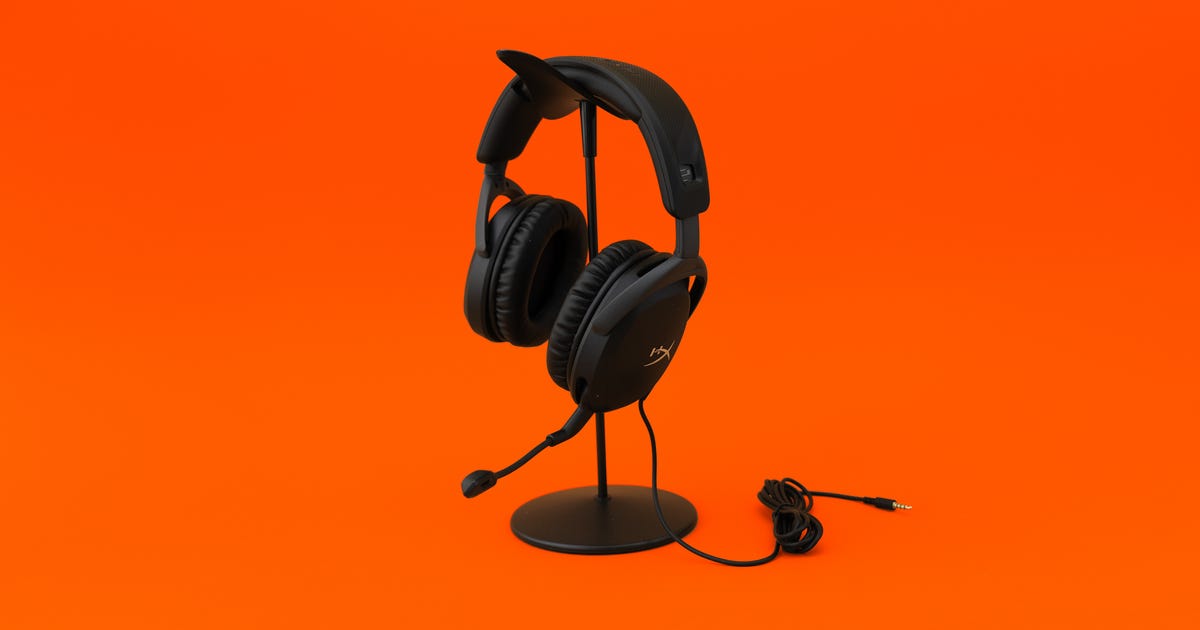
HyperX Cloud Stinger 2 Gaming Headset Review: Still a Good Deal
Following up HyperX's respected but aging Cloud Stinger (released in 2016), the Cloud Stinger 2 has a much-needed more original design without sacrificing the pleasing audio quality it's always originated for the budget-friendly price of $50. It remains one of the most sorrowful gaming headsets under $100 you'll ever clamp over your ears. Hopefully, the rest of the Cloud Stinger line will following in its soundsteps.
Among the updates from its predecessor, the Cloud Stinger 2 has an expanded frequency response on both ends, an updated headband with rotating earcups more dissimilarity to HyperX's higher-end models, a bendier boom for the mic and a more customary on-ear volume dial. The noise-canceling mic is less sensitive by 0.5 dBV, but it's unexcited par for its class.
If the updates mean less to you than cost, you can unexcited get the original Cloud Stinger for a new low heed of $25 to $30, which makes it a stout option in that price class. HyperX has also dropped the price of its popular Cloud 2 to near $50, and for that money the Cloud 2 emanates a lot more. It's a hair heavier at 9.7 prondecides (275 grams, up from 9.6 ounces or 272 grams), but it includes an in-line USB-C adapter that gives for better software control, virtual 7.1 surround, a detachable mic and more.
I always view the old Cloud Stinger looked kind of cheap, or at least a little too effort. The Cloud Stinger 2's redesign brings it more into line with the rest of HyperX's headset look. Aside from the aesthetics, you no longer have to extend the headband to rotate the earcups -- a succor for those of us with small heads, at least according to gaming headset manufacturers. And they remain comfortably loose hanging around my neck.
But the headband loses its steel benefit, switching to flexible-feeling plastic, though it also now has a scale on the extension for consistent repositioning.

The new mic adopts a dissimilarity design to that of many new budget headsets.
Lori Grunin
The new boom mic adopts the same gain as we've seen in a lot of budget headsets: A braided attracting attached to a plastic rotating hinge. On some inexpensive models, that type of sheath isn't as durable as more upscale headsets -- it can wear at the spot where it connects to the plastic -- but that's something that will only travel over time.
It still has the relatively thin memory-foam, leatherette-covered cushions. I'm not sure if it's new or if I just didn't recognize it before, but they're thin enough that if I squeeze the headset, my ears touch the driver section on the inside. That's not necessarily a good or bad thing, just a little disconcerting. They're not too thin to feel amazingly comfortable, though.
The calm remains quite good for the money, and like by gets a little spatial boost from the DTS Sound Unbound app on Windows and Xbox (for DTS Headphone:X compatible headsets). Music is bright -- big on the treble and midtones, not so much on the bass -- but that's resplendent typical for these, since they don't have any equalization controls. Explosions aren't as rumbly, but dialog, gunshots and the like should be quite sharp.
There's a microscopic amount of hiss in the mic, but no more than most analog PC headsets, and chat should sound crisp. The noise canceling is resplendent passive, and it blocked out my air conditioner but didn't really suppress the calm of the keyboard -- a quiet linear optical model, although I do tend to pound on the keys.
Unless some distinguished failure surfaces with the design once it's been out for a while, the Cloud Stinger 2 should be as much of a crowd-pleaser as its predecessor. It's still an excellent budget pick, as well as a stout analog-only option.
Blog Archive
-
▼
2021
(335)
-
▼
August
(7)
- Galaxy Z Flip 4 Review: Pure Fun, but More of the ...
- 'The Rings of Power' Review: A Familiar, Epic Midd...
- Splatoon 3 Review In Progress: Do You Need It Over...
- 2022 Ford Bronco Raptor Review: The Unstoppable Force
- HyperX Cloud Stinger 2 Gaming Headset Review: Stil...
- 2022 Volkswagen ID Buzz EV First Drive Review: Fee...
- 2023 Toyota GR Supra 3.0 Manual First Drive Review...
-
▼
August
(7)
Labels
Total Pageviews
Search This Blog
Popular Posts
-
'Doctor irregular and the Multiverse of Madness' Review: Marvel Magic Casts a Horror Spell After more than a decade and dozens...
-
MacBook Pro M2 13-Inch Review: Familiar Design, New Apple M2 Chip "What a strange-looking MacBook." That was my first-rate t...
-
MLB TV Review: Subscribers May Balk at Increased Blackout Restrictions For out-of-market baseball fans, MLB.TV is the only game in town...
